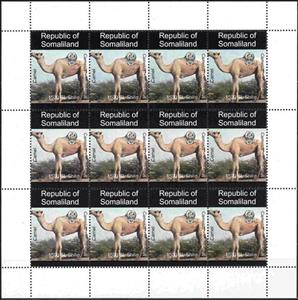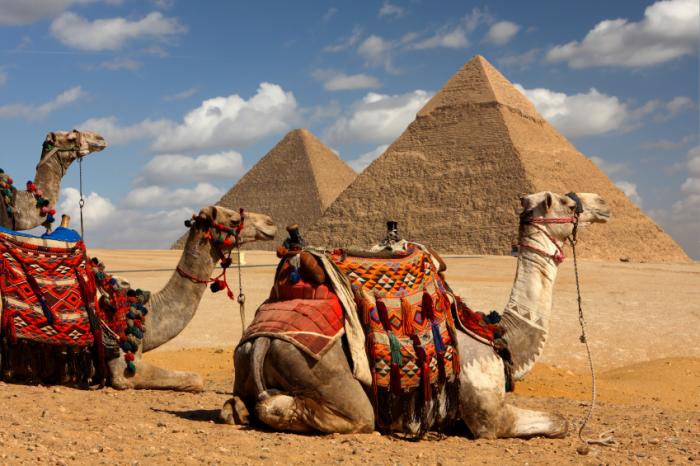Mini Sheet: Animals of Africa Camel (Somaliland 1998)
Animals of Africa Camel (Somaliland 1998)
01 January (Somaliland ) within release Animals Fauna (1998) goes into circulation Mini Sheet Animals of Africa Camel face value 12*1500 Somaliland shilling
| Mini Sheet Animals of Africa Camel in catalogues | |
|---|---|
| Colnect codes: | Col: RS 1998-03KB |
Mini Sheet is square format.
Genuine issued Somaliland stamps ended in 1960 when they gained their independence from being a British Protectorate and became part of Somalia. All stamps used for postage in Somaliland are Somalia stamps from July 1, 1960 forward. Somaliland has no authority to issue their own stamps and has no postal office since 1991 due to conflict with Somalia. This item was produced by an illegal stamp producer located in the UK. Fake First Day Covers affirm this to be a 1998 issue. Some unscrupulous dealers claim it to be a 1997 issue.Also in the issue Animals Fauna (1998):
- Stamp - Animals of Africa AIR MAIL OFFICIAL Blue Overprint EXAMPLE face value 500;
- Stamp - Animals of Africa AIR MAIL OFFICIAL Green Overprint EXAMPLE face value 2,500;
- Stamp - Animals of Africa OFFICIAL Blue Overprint EXAMPLE face value 15,000;
- Stamp - Animals of Africa OFFICIAL Green Overprint EXAMPLE face value 15,000;
- Stamp - Animals of Africa Scout Jamboree Black Overprint EXAMPLE face value 3,000;
- Stamp - Animals of Africa Scout Jamboree Red Overprint EXAMPLE face value 2,500;
- Mini Sheet - Birds Doves of the World face value 6*2500;
- Mini Sheet - Animals of Africa Camel face value 12*1500;
- Mini Sheet - Animals of Africa Lion face value 12*25000;
- Mini Sheet - Animals of Africa Aardvark face value 12*500;
- Mini Sheet - Animals of Africa African Oryx face value 12*10000;
- Mini Sheet - Caracal (Caracal caracal) face value 12*2500;
Mini Sheet Animals of Africa Camel it reflects the thematic directions:
Animals are multicellular, eukaryotic organisms of the kingdom Animalia (also called Metazoa). All animals are motile, meaning they can move spontaneously and independently, at some point in their lives. Their body plan eventually becomes fixed as they develop, although some undergo a process of metamorphosis later on in their lives. All animals are heterotrophs: they must ingest other organisms or their products for sustenance.
A camel (from Latin: camelus and Greek: κάμηλος (kamēlos) from Ancient Semitic: gāmāl) is an even-toed ungulate in the genus Camelus that bears distinctive fatty deposits known as "humps" on its back. Camels have long been domesticated and, as livestock, they provide food (camel milk and meat) and textiles (fiber and felt from camel hair). Camels are working animals especially suited to their desert habitat and are a vital means of transport for passengers and cargo. There are three surviving species of camel. The one-humped dromedary makes up 94% of the world's camel population, and the two-humped Bactrian camel makes up 6%. The wild Bactrian camel is a separate species and is now critically endangered.


